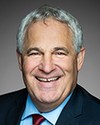Thank you.
OSIC started when the minister at the time, Minister Duncan, consulted with her expert committee and also with athletes, and they all came up with two things they absolutely wanted. One was to have a code of conduct, because that didn't exist, and the other one was to have an independent mechanism.
The work started at that moment, but it was pursued by the minister responsible for sport at the time, Minister Guilbeault. What happened is that an organization named McLaren came here and looked at what the best model would be and how we could make it work in a more efficient way. The people who worked with them were athletes and organizations from a variety of backgrounds, and they came up with the criteria for an organization that would make it successful in achieving the result that athletes had asked for.
That's what led to a call for proposals. It was based on those very criteria that had been developed by all these people involved, not just by one group. Various organizations applied, and the proposal that best met the criteria was the one that got it, which was SDRCC, creating OSIC separately. That's when Minister Guilbeault, the minister for sport at the time, announced that they had been chosen, and then they started the work to implement the work.
On your question about what would have been better, it's hard to say, because it's hypothetical, but I think it's fair to say that this mechanism was not in place at the time, and if there had been a mechanism for athletes to go to for help and for sanctions to be taken, I really do hope that it would have made a difference.




